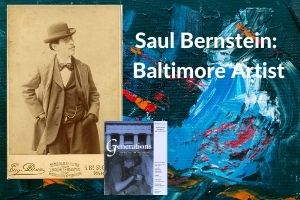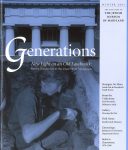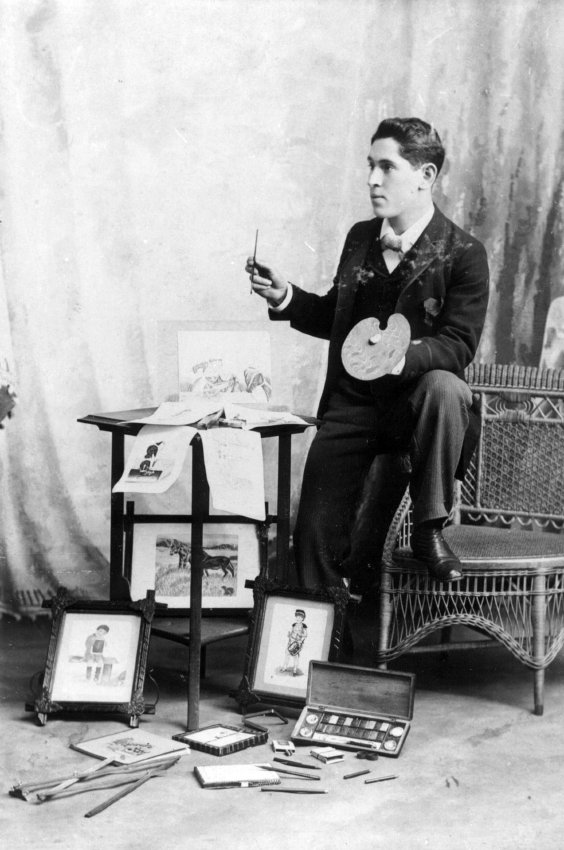From Lithuania to Baltimore

 Part 2 of “Saul Bernstein: Baltimore Artist,” written by Jobi Okin Zink, former JMM collections manager. Originally published in Generations – Winter 2001.
Part 2 of “Saul Bernstein: Baltimore Artist,” written by Jobi Okin Zink, former JMM collections manager. Originally published in Generations – Winter 2001.
Details of Saul Bernstein’s life can be gleaned from a letter that he wrote to Henrietta Szold on February 6, 1899, apparently responding to inquiries about his age and early childhood. He was born in 1872 in a small town called Poswol in the Lithuanian province of Kovno. Bernstein’s father studied Talmud while his mother made a living as a tailor. Saul, too, studied Talmud at various yeshivas during his childhood, but preferred to draw. He told Szold that “I loved to draw and drew when I had time or did not have it, hence, a bang over my head with the largest five books of Moses in the place, after my masterpieces were destroyed.” Bernstein plodded along in his Talmudic education, but harbored dreams of becoming a trained artist. After receiving a letter from an uncle in Baltimore who was making a good living, Bernstein decided to come to America. Using money that his mother had saved, Saul emigrated to Baltimore in 1889.

Bernstein stayed in Baltimore for only one week before becoming a peddler, an occupation that took him from Maryland’s Eastern Shore to Cooper, West Virginia. In addition to carrying his wares in the pack on his back, Bernstein carried art supplies, including a folding easel. After a few years of hard work, he became a partner in the Silver & Bernstein Clothing Store in West Virginia. With his savings, Bernstein was able to bring his family to America, and his uncle helped them establish a residence in Baltimore.

Bernstein had not given up his dream of becoming an artist and, in fact, decorated his rooms in the store with his art. Most of his subjects were customers, children, or the local landscape. It was, however, his portraits of General George Washington and Czar Alexander III that in 1892 captured the attention of Louis Lutzky, a Baltimore shoe drummer for Frank and Adler, who was traveling on business. Lutzky was so impressed with Bernstein’s raw talent that he arranged for Bernstein’s raw talent that he arranged for Bernstein’s enrollment in the Maryland Institute. Grateful for the opportunity to study art, Bernstein sold his share in the partnership to raise funds for his tuition. One imagines that Bernstein must have had a charming, engaging personally, as this is only one of many instances where Bernstein relied on the kindness and help of others.
Continue to Part 3: An Artist’s Education, publishing on June 10, 2019.
